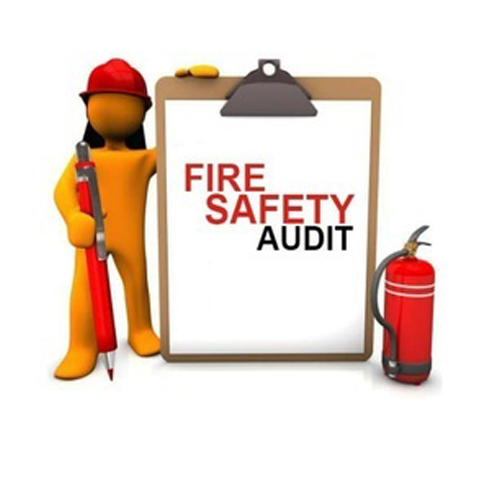Title Page
-
Site conducted
-
Conducted on
-
Prepared by
-
Location
Kitchen Audit Report
Cleanliness and Hygiene
-
Floors: Check for cleanliness, absence of spills, and proper sanitization.
-
Walls and Ceilings: Ensure they are clean, free from grease and stains.
-
Work Surfaces: Verify that all work surfaces are cleaned and sanitized regularly.
-
Hand Washing Stations: Ensure availability of soap, hand sanitizer, and clean towels.
-
Personal Hygiene: Check if staff are following proper hygiene practices (clean uniforms, hair nets, gloves, etc.).
Food Storage and Handling
-
Refrigeration: Check temperature logs, cleanliness, and proper storage of food items.
-
Dry Storage: Ensure that dry goods are stored off the floor and in sealed containers.
-
FIFO Method: Verify that the First In, First Out method is being followed.
-
Cross-Contamination: Ensure that raw and cooked foods are stored separately to prevent contamination.
-
Expiration Dates: Check that all food items are within their expiration dates.
Equipment and Maintenance
-
Functionality: Ensure all kitchen equipment is in good working condition.
-
Cleaning: Verify that equipment is cleaned regularly and properly maintained.
-
Preventive Maintenance: Check if regular maintenance schedules are followed.
-
Safety Guards: Ensure that all equipment has necessary safety guards and features.
Safety and Compliance
-
Fire Safety: Check for availability and functionality of fire extinguishers and smoke detectors.
-
Emergency Exits: Ensure that emergency exits are clearly marked and unobstructed.
-
First Aid Kits: Verify that first aid kits are stocked and easily accessible.
-
Compliance Certificates: Ensure that all relevant compliance certificates and licenses are up to date.
-
Safety Training: Check that staff have received appropriate safety training.
Waste Management
-
Segregation: Ensure proper segregation of waste (organic, recyclable, and general waste).
-
Disposal: Verify that waste is disposed of properly and regularly.
-
Bins: Check that waste bins are covered, labeled, and cleaned regularly.
-
Pest Control: Ensure regular pest control measures are in place and effective.
Staff Performance
-
Training: Verify that staff are adequately trained in food safety and hygiene practices.
-
Performance Reviews: Check records of regular performance reviews and feedback.
-
Adherence to Protocols: Ensure staff are following all kitchen protocols and procedures.
-
Teamwork: Observe the coordination and teamwork among kitchen staff.
-
Efficiency: Assess the efficiency and productivity of staff during peak hours.
Cleanliness and Hygiene
-
Floors are clean and free of spills.
-
Walls and ceilings are clean and free of grease and stains.
-
Work surfaces are sanitized after each use.
-
Hand washing stations have soap, sanitizer, and clean towels.
-
Staff wear clean uniforms.
-
Hair nets and gloves are used appropriately.
-
Sinks are cleaned regularly.
-
Trash cans are emptied frequently and kept clean.
-
Cutting boards are sanitized after each use.
-
Ventilation systems are clean and functioning.
Food Storage and Handling
-
Refrigerators are at correct temperatures.
-
Freezers are at correct temperatures.
-
Temperature logs are maintained.
-
Dry goods are stored off the floor.
-
Food items are stored in sealed containers.
-
FIFO method is followed.
-
Raw and cooked foods are stored separately.
-
All food items are within their expiration dates.
-
Food storage areas are clean.
-
Food items are labeled correctly.
Equipment and Maintenance
-
All kitchen equipment is in good working condition.
-
Equipment is cleaned regularly.
-
Preventive maintenance schedules are followed.
-
Equipment safety guards are in place.
-
Gas lines are inspected regularly.
-
Ovens and stoves are clean and functioning.
-
Refrigeration units are maintained.
-
Small appliances are clean and operational.
-
Utensils are clean and stored properly.
-
Equipment manuals are available.
Safety and Compliance
-
Fire extinguishers are available and functional.
-
Smoke detectors are operational.
-
Emergency exits are clearly marked.
-
Emergency exits are unobstructed.
-
First aid kits are stocked.
-
Compliance certificates are up to date.
-
Safety training records are maintained.
-
Staff are aware of emergency procedures.
-
Chemical storage is secure and labeled.
-
MSDS sheets are available.
Waste Management
-
Waste is segregated into organic, recyclable, and general waste.
-
Waste bins are covered.
-
Waste bins are labeled.
-
Waste bins are cleaned regularly.
-
Trash is disposed of daily.
-
Organic waste is composted if possible.
-
Recyclable materials are sorted.
-
Staff follow waste disposal protocols.
-
No signs of pest activity near waste areas.
-
Pest control measures are in place.
Staff Performance
-
Staff are trained in food safety.
-
Regular performance reviews are conducted.
-
Staff follow kitchen protocols.
-
Staff demonstrate proper hygiene practices.
-
Teamwork is evident among staff.
-
Staff are efficient during peak hours.
-
Staff attend regular training sessions.
-
New staff receive thorough onboarding.
-
Staff handle food safely.
-
Staff are aware of allergy protocols.
Inventory Management
-
Inventory is tracked and recorded accurately.
-
Stock levels are maintained appropriately.
-
Overstocking and understocking are avoided.
-
Inventory is rotated to use older stock first.
-
Regular inventory audits are conducted.
-
Supplier deliveries are checked for quality.
-
Inventory storage areas are organized.
-
Damaged goods are disposed of properly.
-
Purchase orders are documented.
-
Inventory discrepancies are investigated.
Food Preparation
-
Food preparation areas are clean.
-
Cross-contamination is avoided.
-
Separate utensils for different food types.
-
Food is cooked to correct temperatures.
-
Cooling and reheating procedures are followed.
-
Ready-to-eat foods are handled with care.
-
Food is plated attractively.
-
Special dietary needs are accommodated.
-
Staff use thermometers correctly.
-
Leftover food is handled safely.
Customer Service
-
Staff are polite and professional.
-
Orders are taken accurately.
-
Food is served at the correct temperature.
-
Customer complaints are handled promptly.
-
Dining areas are clean and inviting.
-
Tables are cleared and sanitized quickly.
-
Staff check on customer satisfaction.
-
Menus are clean and up-to-date.
-
Special requests are accommodated.
-
Payment processes are smooth.
Documentation and Records
-
Daily cleaning schedules are documented.
-
Temperature logs are maintained.
-
Maintenance records are up to date.
-
Staff training records are kept.
-
Incident reports are documented.
-
Pest control logs are maintained.
-
Waste disposal records are kept.
-
Supplier deliveries are recorded.
-
Compliance certificates are filed.
-
Regular audits are documented.








